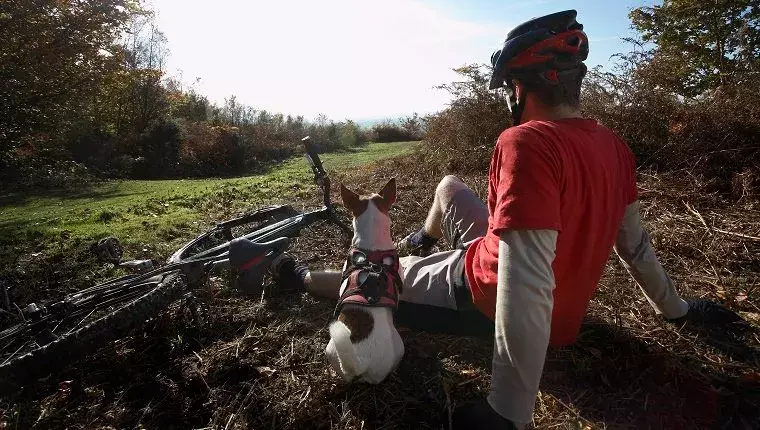For many dog owners, the thought of sharing a bike ride with their furry companions can evoke pure joy. The exhilaration of the wind swirling around, the vibrant sights and sounds of nature, and the thrill of speed can transform an ordinary day into an extraordinary adventure. Biking offers multiple benefits: it’s a great workout for both human and dog, enhances the bond between them, and satisfies a dog’s natural instinct for exploration. However, as appealing as the prospect may be, ensuring the safety and wellbeing of your pup should always take precedence.
Assessing Your Dog’s Fitness and Readiness
Before you strap on your helmet and hit the road, it’s essential to evaluate whether your dog is fit enough for this activity. Not all dogs are created equal when it comes to exercise; various factors such as age, breed, and health conditions matter significantly. Short-nosed breeds like Bulldogs or Pugs are often prone to breathing difficulties, making vigorous activity like biking a risky endeavor. In the same vein, small dogs or those that are overweight may struggle to keep pace, and attempting to force this exercise can lead to injuries.
A pre-adventure check-up at the vet can provide clarity on your dog’s fitness level. Once you ensure that your pup is healthy enough for biking, consider their behavior—do they already know basic commands? A dog that easily gets distracted or bolts after passing squirrels isn’t ideal for biking, and unruly behavior could quickly lead to dangerous situations. It’s best to train them in controlled walking first before transitioning to a bike ride.
Essential Gear for Your Dog’s Safety
Once you’ve determined that your dog is ready for the ride, it’s crucial to assemble the right equipment tailored for their safety. A non-tangling leash is a must—attach it securely to the rear of the bike instead of the handlebars. This simple adjustment can prevent potentially disastrous accidents. Consider using a well-fitting harness instead of a standard collar to protect your dog’s neck from potential injury during sudden movements.
Visibility is paramount when biking with your pet; therefore, equipping both your bike and your dog with bright, reflective gear is essential. Additionally, consider adding lights to both your bike and your dog’s collar to increase visibility during twilight rides. Nobody wants an unforeseen mishap just because they were difficult to spot on the road.
To prepare for any eventualities, carrying a doggy first-aid kit and extra water will equip you to handle a number of situations that could arise during your ride. Hydration is key, especially in warm weather when pets can easily overheat.
Choosing the Right Terrain and Route
Not all terrains are suitable for biking with your dog. When planning your biking route, consider the surface: rough terrains or hot pavement can wreak havoc on your dog’s paws and may result in injuries or burns. Avoid paths littered with sharp objects that could harm their feet, opting instead for well-maintained bike trails. Conducting a pre-ride assessment of your route helps ensure a safe experience for both you and your furry friend.
Taking the time to familiarize your dog with your bicycle is beneficial as well. Walking alongside your bike allows them to acclimate to the new sights and sounds while practicing commands like “slow” and “stop.” Engaging in familiar exercises will help build confidence, allowing your dog to feel comfortable once you start biking together.
Pacing and Attention on Shared Adventures
When you’re ready to pedal off, prioritize pacing. Begin at a slow speed to allow your dog to adapt to the rhythm of biking. Keep an eye on their energy levels, staying vigilant for signs of fatigue such as excessive panting or drooling. If your dog seems overwhelmed, take a break, hydrate, and let them rest before continuing.
It’s essential to remember that the purpose of this journey is to provide exercise and enjoyment for your dog. Keep distractions to a minimum and stay attentive to your surroundings. If your dog starts to pull or gets distracted, be ready to react quickly to maintain safety.
Alternative Options for Dog Companionship on Rides
For those who discover that their dog simply can’t keep up with a biking pace, don’t despair! There are alternative ways to bring your furry friend along. Small dogs can ride comfortably in specially designed baskets or carriers that attach to the bike, while larger dogs can enjoy the ride in a pet trailer. Just ensure that they feel secure and stable within the carrier, and practice riding with the added weight to adjust your handling of the bike.
Regardless of the method you choose, celebrations at the end of the ride are essential. Shower your dog with praise and rewards to acknowledge their participation and help create positive associations with biking together.
Biking with your dog can be an exhilarating experience, full of joy and adventure. With thoughtful preparation and persistent mindfulness, you can create a fulfilling environment for both you and your pup, spending quality time together amidst the great outdoors.

